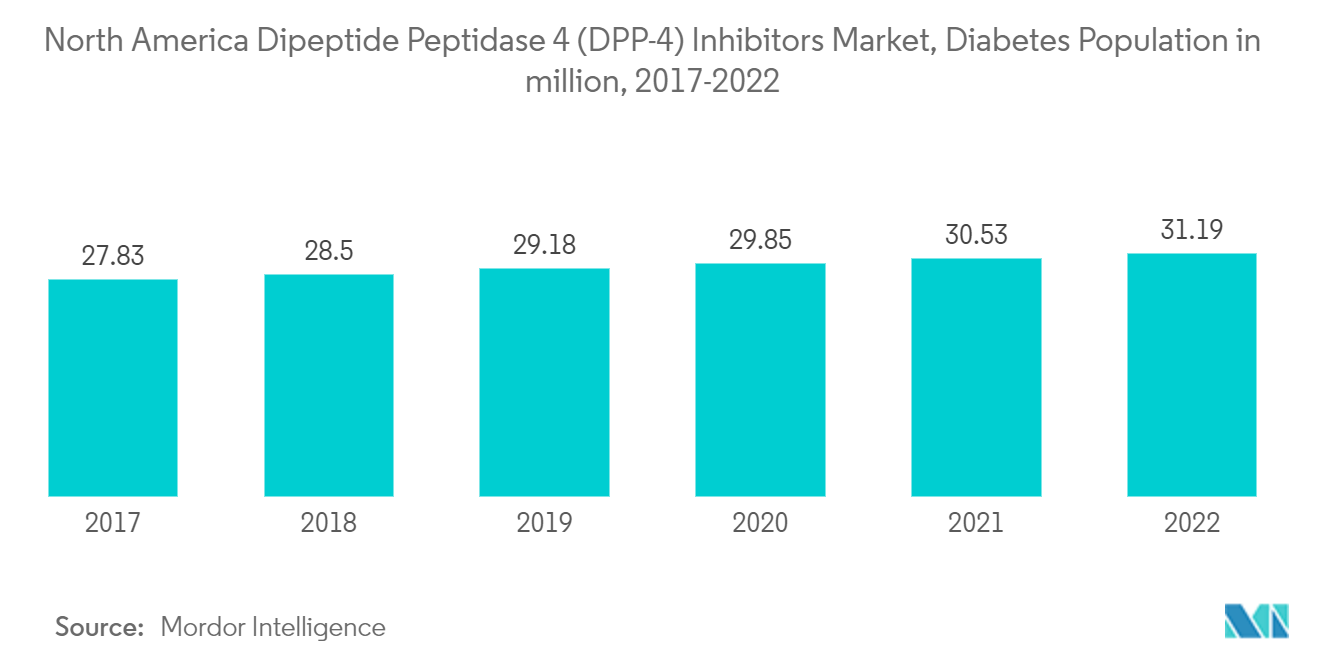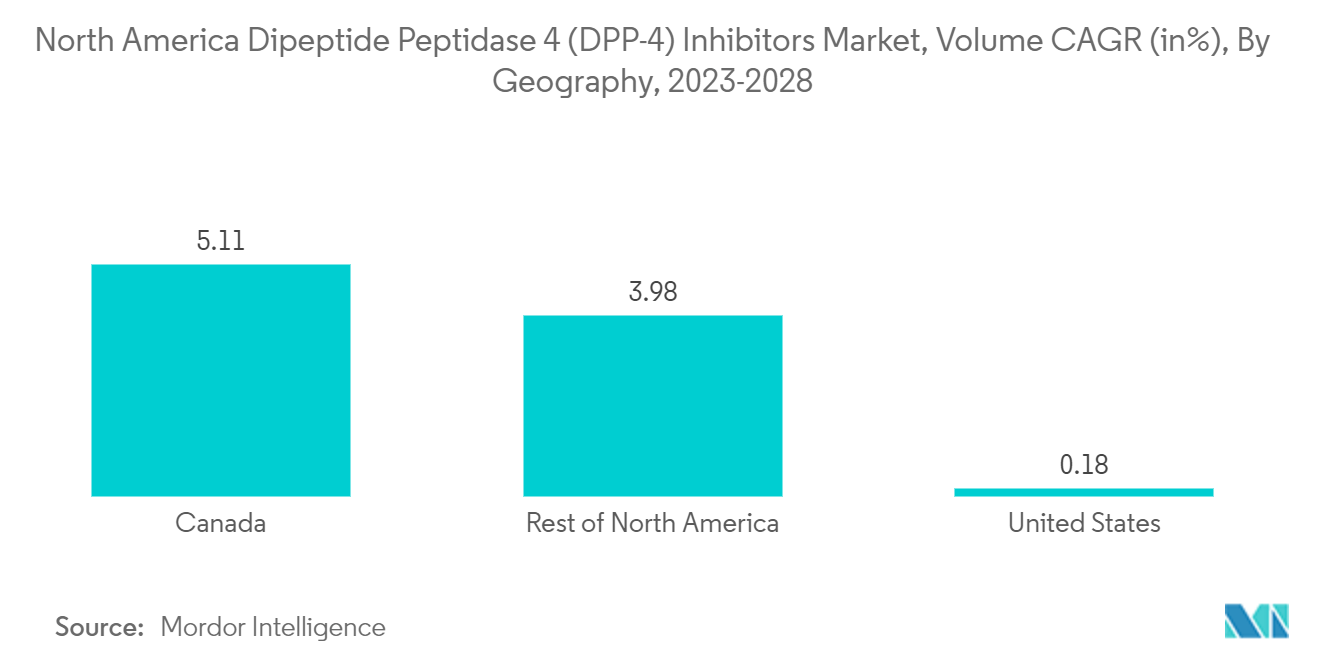Market Trends of North America Dipeptide Peptidase 4 (DPP-4) Inhibitors Industry
Rising diabetes prevalence is likely to boost the market studied over the forecast period.
The diabetes population in the North American region is expected to rise by more than 1% over the forecast period.
The CDC National Diabetes Statistics Report 2022 estimated that more than 130 million adults live with diabetes or prediabetes in the United States. Type 2 diabetes is more common, and diabetes is more consequential among communities of color; those who live in rural areas; and those with less education, lower incomes, and lower health literacy. According to the Division of Metabolism and Endocrinology Products in the FDA's Center for Drug Evaluation and Research, 'Patients want effective treatment options for diabetes that are as minimally intrusive on their lives as possible, and the FDA welcomes the advancement of new therapeutic options that can make it easier for patients to control their condition.'
Dipeptidyl peptidase 4 (DPP-4) inhibitors are effective in the treatment of type 2 diabetes, as they maintain blood glucose levels through the degradation of incretin peptides, glucagon-like peptide 1 (GLP-1), and glucose-dependent insulinotropic polypeptide. Oral Anti-Diabetic Drugs have been available internationally and are recommended for use when escalation of treatment for type 2 diabetes is required along with lifestyle management.
They are typically the first medications used in treating type 2 diabetes due to their wide range of efficacy, safety, and mechanisms of action. They help diabetes patients control their condition and lower the risk of diabetes complications. These agents present the advantages of easier management and lower cost, so they became an attractive alternative to insulin with better acceptance, which enhances adherence to the treatment.
Owing to the rising rate of obesity, growing genetic factors for type-2 diabetes, the increasing prevalence, and the factors above, the market will likely continue to grow.

The United States holds the highest market share in the Market
United States holds the highest market share in the North American Dipeptide Peptidase 4 (DPP-4) Inhibitors Market in the current year. It is expected to register a CAGR of about 0.31% over the forecast period.
The disease's growing incidence, prevalence, and progressive nature have encouraged the development of new drugs to provide additional treatment options for diabetic patients. Non-insulin treatments, used as first-line therapies for patients with type 2 diabetes, currently capture more than half the sales in the anti-diabetic market.
Over the past decade, two important classes have entered this market: dipeptidyl peptidase-4 inhibitors (DPP-4) and sodium-glucose cotransporter-2 inhibitors (SGLT-2). These agents work in various ways to reduce blood sugar levels in people with type 2 diabetes; some stimulate insulin secretion by the pancreas, and others improve the responsiveness of cells to insulin or prevent glucose production by the liver. Others slow the absorption of glucose after meals. Also, the use of oral anti-diabetes drugs is rising because new-generation oral drugs, such as DPP-4 and SGLT-2, reduce the rate of CV risk in diabetes patients.
Diabetes medications are covered by most health insurance plans because they are considered medically necessary. Medicare generally covers diabetes medications. The American Diabetes Association has a guide to Medicare and diabetes prescription drug benefits. For patients covered by insurance, typical out-of-pocket costs consist of a prescription drug copay ranging from USD 10 to USD 50, depending on the drug. If the patient takes multiple drugs, copays can total USD 200 monthly or more.
The roll-out of many new products, increasing international research collaborations in technology advancement, and increasing awareness about diabetes among people are some of the market opportunities for the players in the United States market.


